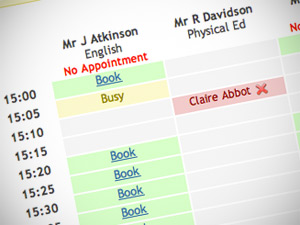This is half a post really. I am just thinking through, “the thinking” behind two learning / revision tasks. It is a two step process – bare with me. I think you will find it is worth it. I think it is worth it.
From my experience, students many of us love solving problems and riddles. Traditionally what we might, in the trade, call a hook. I wonder, if it is in fact a human condition? Are we predisposed to solve problems? In the same sense we are predisposed to enjoy stories?
This week I tried to create a icon puzzle / riddle / communication summarising the opening lines of Act 3.3 of Othello. To be clear and to answer @olicav point – these are untehtered icons/images. The images convey meaning in what they represent. Eg, Kryptonite – weakness/fatal flaw.
The solution is at the bottom of this earlier post.

Presenting just this collection of images led to a heated exchange. (What were the students thinking?)
Much like Othello in Act 3.3, students took the bait. I was thrilled with how the task was mauled and devoured… with students offering suggestions enthusiastically, if haphazardly. It felt a little like charades as I listened out for the correct answers. Summarising each time we added to the puzzle. Given the success and their attention, I vowed to create another puzzle for the second and third exchanges between Iago and Othello. But – here is the “but…” Thinking as hard as I did, about what I was trying to create / communicate / and the thinking I was trying to prompt in the students, I realised that I had benefited too, as much, if not more, however it had taken up quite a bit of time to build the puzzle / riddle / communication (now named an icomunication.
Step 2 – What if…
What if, the students build / construct the puzzles / icommunications? I bit like when our HoD created for MacBeth in emojis.

A revision task and a “build the teacher a resource” task for future lessons all in one? Is the deepest and most robust learning in solving or creating the icomunication? In decoding or encoding?
n.b. This question had me thinking most over night and I plan to ask Oliver Caviglioli – if anyone will know – he is most likely to.
Solving Decoding: What do I know about the scene? What might that icon represent? How do the icons connect? What is the story? Does it need to be partnered with another icon? (Dopamine hit – from success).
Creating Encoding: What do I know about the scene? What icon best represents that? What does it communicate? Does it need to be partnered with another icon?
What has greater learning power? Encoding or decoding?
So I posed the challenge to my students – and as it was, I went with using emoji. I gave the students a summary of the section of the text that I wanted coded. They worked in pairs, triples or quads on a shared Google Doc. What do you think? I appreciate a few of the icons have lost “their image?” and spaces are shown as a square – but I’d be surprised if you could not decode the puzzle. I wonder if you could decode the separate sections / messages of the puzzle.

Most importantly, did the thinking used to create / encode the icomunication, strength a) the students understanding and b) the retrieval strength around the knowledge and connecting it together? This are aspects of story telling and the use of metaphor – all in all, two powerful activities.
After discussing both encoding and decoding task with @OliCav – I am going with the decoding as the impactful – no time for an RCT, just my teachers gut. Then again, I got a lot from seeing the students tackle the problem? Would students seeing their peers tackle their problems…
Made with https://www.emojicopy.com/
Answer: Stave 1 – A Chrismas Carol



That’s very interesting but I’m not sure I can answer it, alas.
Firstly, I think I’m correct in understanding you/your students present a series of icons untethered to words—the association living in their minds alone. So, in that sense, it’s dual coding but not as usually presented.
I’m wondering, therefore, if the benefits regarding the retention of meaning is consequently weaker or, indeed, stronger. The latter, I guess, might be so if frequently tested as it requires more effort to retrieve.
Relating to Fiorella & Mayer’s 2015 book Learning As A Generative Activity, we learn that generating something strengthens the encoding process and, consequently, the retrieval too.
So, in that sense, all things being equal, I’d put my bet on the problem solving having the greater impact. But that’s just a guess on my part.
Good question – brilliant. No answer…
icons untethered to words – yes. The association living in their minds alone. Yes.
Relating to Fiorella & Mayer’s 2015 book Learning As A Generative Activity, we learn that generating something strengthens the encoding process and, consequently, the retrieval too. – And that is where I think the students are “working” learning. Taking the mean of the scene and encoding it as an image.
As for the greater – problem solving benefits from the euphoria of solving it.
Pingback: Plotline zzleup | KristianStill